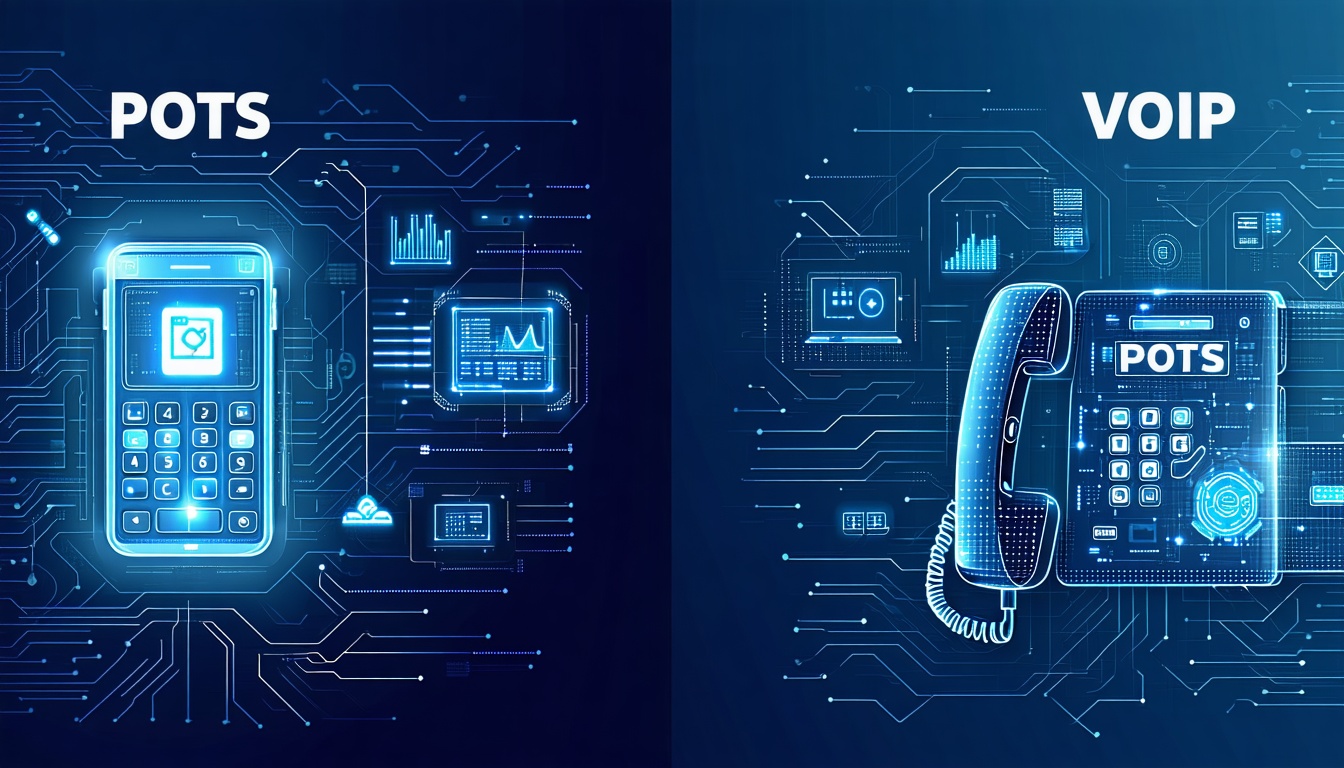Choosing between a POTS line vs VoIP is a critical decision for B2B organizations seeking reliable and scalable telephony solutions. Traditional POTS lines use analog signals transmitted over copper wiring, while VoIP converts voice into digital packets carried over IP networks. This comparison offers an objective analysis of cost structures, feature sets, reliability metrics, and security considerations. IT decision-makers may apply this insight to determine the optimal communication strategy for their business needs.
Understanding POTS And VoIP
POTS Fundamentals
Plain Old Telephone Service (POTS) delivers analog voice calls over copper wires, connecting directly to the Public Switched Telephone Network. POTS lines require minimal equipment and do not depend on an internet connection. Key characteristics include:
- Native reliability and uptime, even during power outages
- Simple call setup with dedicated wiring (analog pots lines)
- Basic voice quality up to 10 kHz at 8-bit resolution (Symplicity Communications)
- Low maintenance requirements and predictable monthly fees
Organizations may also deploy portable POTS in a box solutions as backup for critical locations. For an overview of installation basics, see how is a pots line connected.
VoIP Fundamentals
Voice over Internet Protocol transforms voice into digital signals and routes calls over data networks. Eliminating the need for a traditional Private Branch Exchange, VoIP systems leverage standard routers and packet-switching technology. Core advantages include:
- Feature integration with email, CRM and collaboration platforms
- Unlimited calling options and global extension at flat rates
- Projected market growth to $102.5 billion by 2026 (ThinkSecureNet)
- Scalable deployment via hosted or on-premises architectures
From there, organizations may choose a fully hosted model or manage call services alongside existing IT infrastructure.
Comparing Cost Considerations
Capital And Operational Expenses
- POTS lines incur fixed monthly charges per line and occasional service fees for moves or changes.
- VoIP often requires an upfront network assessment, but shares existing LAN/WAN investments and reduces hardware costs.
Long-Term Savings
- Over time, VoIP’s shared network approach can lower per-minute costs, especially for international and interoffice calls.
- POTS replacement may drive transitional expenses if copper infrastructure requires upgrades.
That’s why total cost of ownership should account for both operational savings and any necessary network enhancements.
Evaluating Feature Sets
- Call Routing & Auto-Attendant: VoIP supports complex menus and time-of-day rules; POTS offers only basic forwarding.
- Conferencing & Collaboration: Digital systems enable video calls and screen sharing, features not natively available on landlines.
- Mobility & Soft Clients: VoIP allows users to take extensions anywhere with internet access; POTS is bound to physical handsets.
- Integration: VoIP links directly with CRM, helpdesk and analytics tools; POTS provides voice only.
In this scenario, organizations weighing advanced communications may prioritize VoIP’s extensibility over legacy feature simplicity.
Assessing Reliability And Quality
Network Dependence vs Line Reliability
POTS reliability is inherent, with minimal points of failure. VoIP availability depends on internet bandwidth, quality-of-service (QoS) settings, and network redundancy.
Audio Clarity
VoIP systems deliver at least 22 kHz at 16-bit resolution—often reaching CD-quality audio—compared to POTS’s analog cap at 10 kHz (Symplicity Communications). However, packet loss, jitter, and latency may impact call clarity without proper network design.
Analyzing Security And Compliance
Risk Profiles
- POTS lines are largely impervious to internet-based threats but susceptible to physical taps.
- VoIP platforms face interception, eavesdropping, and unauthorized access risks.
Mitigation Strategies
- Encryption of SIP traffic and secure VPN tunnels for remote extensions
- Regular software updates, multi-factor authentication, and intrusion detection
- Compliance alignment with industry regulations for data privacy and call recording
Organizations may consider a hybrid approach, retaining some analog lines for emergency services alongside encrypted VoIP for routine business calls.
Reviewing Scalability And Flexibility
Adding Capacity
VoIP enables on-demand provisioning of new extensions with minimal configuration. POTS expansions require physical line installations and service orders.
Location Independence
Remote or mobile workers can connect to the corporate call network via soft clients or IP phones. POTS handsets remain tethered to office jacks and local exchanges.
Decision Framework
Organizations may consider POTS when absolute uptime and simplicity are paramount. Conversely, VoIP offers a strategic platform for feature-rich communications and long-term cost efficiencies. Many businesses adopt a phased POTS replacement to mitigate risk during network upgrades (pots replacement).
Conclusion
The choice between traditional landlines and internet-based telephony hinges on operational priorities. POTS lines continue to deliver unwavering reliability and ease of use, while Voice over Internet Protocol unlocks advanced features, integration capabilities, and potential cost savings. By mapping communication requirements against cost, security and scalability, IT leaders can craft a tailored transition plan that aligns with organizational goals.
Need Help With Selecting POTS Or VoIP?
Need help with selecting the right telephony solution? We assist organizations in evaluating requirements, identifying the optimal mix of legacy and digital lines, and connecting with the best providers. Reach out to explore tailored strategies and ensure a seamless transition to a future-proof communication platform.






